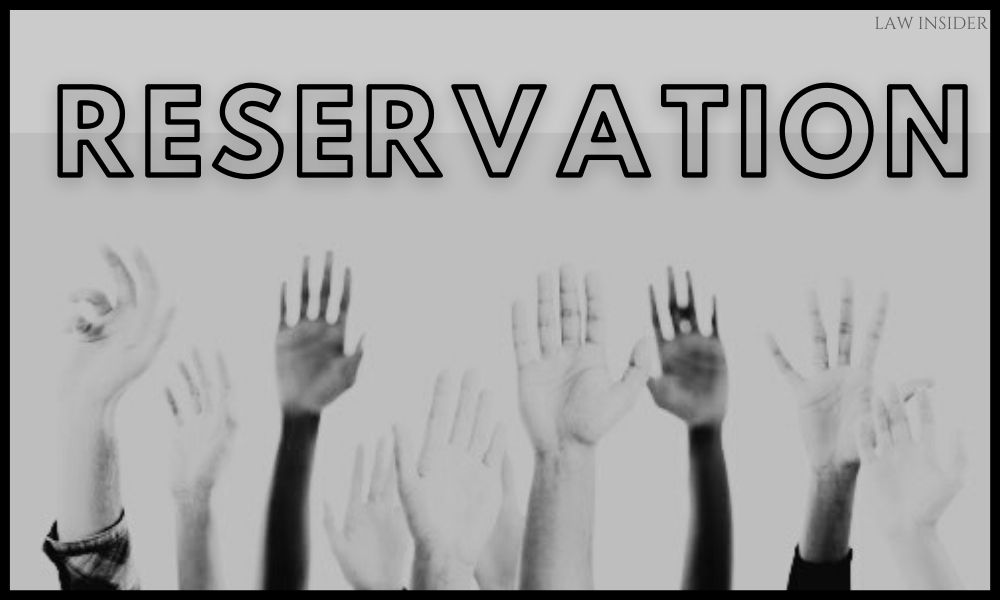The government has been praised for establishing reservations for Other Backward Classes (OBCs) in the National Eligibility Cumulation Entrance Test (NEET) examinations, and the decision has reignited discussion about caste censuses and re-ignited the affirmative action argument.
The affirmative action programme that was envisioned during the republic’s formative moments is unquestionably one of the most amazing measures crafted by our Constitution architects. It was historically crucial in articulating the idea of justice in a social system that is fundamentally unequal and repressive, such as ours.
While reservation provisions are undeniably one of the success stories of Indian democracy, they have also amassed a fair share of challenges that require prompt policy attention and debate.
Need For Reservation :-

- To make up for the past injustices suffered by the country’s lower castes.
- To provide backward sectors of society a fair playing field since they cannot compete with others who have had access to resources and methods for ages.
- To provide proper representation of backward classes in state-run services, and to promote backward classes.
- To guarantee that meritocracy is based on equality, which means that all individuals must be raised to the same level before being judged on merit.
Problems With Current Policy :-
- No Equity: It was hoped that by reserving seats in state political and public institutions, formerly marginalised groups — who had endured years of tyranny and humiliation — would now be allowed to participate in power sharing and decision-making processes.
- However, in our diverse society, this technique of removing infirmities has not resulted in an equalisation of life prospects for many groups.
- Reification Problem: The existing system has a reification problem (ambiguity fallacy), which is a fact in the current scenario.
- The data from the Justice G. Rohini Commission’s report on the sub-categorisation of OBCs provides a good overview of the situation.
- The panel determined that 97 percent of the OBC quota benefits went to slightly under 25% of the castes based on statistics from the last five years on appointments in central government positions and OBC admissions to central higher education institutions.
- A total of 983 OBC groups, or 37% of the total, have no representation in both central government positions and university admissions.
- The study also claims that just 10% of OBC communities have received 24.95 percent of employment and admissions.
- Data Deficit: It’s worth noting that the Rohini Commission’s data is limited to institutions under the control of the central government.
- There is a scarcity of intelligible data on the socioeconomic circumstances of various social groups at the state and municipal levels.
- Even throughout the period of emancipation, castes remained linked to more conventional sources of income and were unable to take advantage of the new opportunities afforded by the opening of the economy.
- In the absence of a social safety net on the ground, the marginal majority remains in history’s waiting room, waiting to glimpse the light of the state’s policy grid.
- Many ideas were presented in the expert group for an Equal Opportunities Commission’s thorough report, which was delivered to the Ministry of Minority Affairs in 2008.
- However, there has been little policy development in this area. Governments have been hesitant to participate in such bold policy alternatives in the past, nearly usually bowing in to short-term political rewards.
- Demands from the Marginalized Section: There is now a significant demand from individuals who have not been able to profit from reservations from inside the marginalised parts to create some policy alternative to augment the present reservation system.
- Asymmetrical Quota Distribution: Asymmetrical reservation distribution has even harmed cohesion among lower caste groupings.
Way Forward :-

- Recalibrating Affirmative Action: Affirmative action advantages must be shared by the poorest of the poorest portions of any caste.
- A method is needed to solve this flaw in current affirmative action implementation and make the system more responsible and responsive to intra-group demands.
- The Need for Evidence-Based Policy: There is a pressing need to establish a wide range of context-sensitive, evidence-based policy alternatives that can be adapted to meet the needs of various populations.
- Institutional Setup: An agency similar to the Equal Opportunity Commission of the United States or the United Kingdom is required to carry out two critical but connected tasks.
- Create a deprivation index by combining data from socioeconomic censuses of various groups, including caste, gender, religion, and other group disparities, and ranking them in order to develop tailored policies.
- Conduct a non-discrimination and equal opportunity audit of companies and educational institutions, and produce codes of good behaviour in various sectors.
- At the institutional level, this will make policy development and monitoring easier.
- The Importance of a Caste-Based Census: A socioeconomic caste-based census becomes a requirement for any substantial reform of India’s affirmative action framework to begin.
- As a result, it is imperative that caste censuses be included alongside general censuses.
- Strong Political Will: Finding a balance between justice for the backwards, equality for the forwards, and overall system efficiency requires a strong political will.
Conclusion :-
As a result, it is vital to reframe the problem of reservation in a way that takes into account the changing nature of Indian culture and economy. This framework should aid in achieving the ideal balance of quality and equity.
